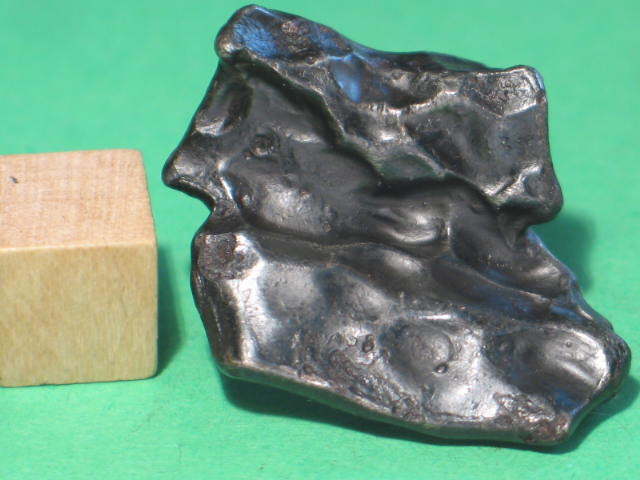Technically, meteorites formed in space around the same time the Earth was forming. While Earth went through various atmospheres and engaged in active rock forming and plate techtonics, meteors just sat out in space, unchanged... and waited. Finally, they made their move!
So yes, there was one bit of catastrophic interaction, the flaming plummet through the Earth's atmosphere followed by a terrific 'whomp' as they impact the ground and shatter. I call that the meteorite delivery system.

A good primer on meteorites is at my favorite shop, Eric Twelker's "Meteorite Market", especially his "how meteorites form" page. I've purchased many samples from him. I've also bought specimens from Jim Strope's "Catch a Falling Star", and can recommend both shops as being accurate. Beware the street vendor peddling 'meteorite fragments' on the seedy corner by your local 7-11! Also be careful with eBay-- as with any collectible, it's good to get it from a trusted source.
I recommend, if you're a teacher or a speaker, that you (when you order a meteorite for yourself) ask the vendor if you can buy a dozen tiny 1-gram fragment pieces at $1-2/each. They make great prizes for science fair winners or memorable giveaways. Touching space for $1, hard to beat.
For those into fantasy, it is speculated that the amazing metal mithril (as mentioned in old sagas, and also The Lord of the Rings) may have been meteoritic iron. Imagine you're a primitive iron-working culture, when suddenly a lump of ultra-pure weapons-grade iron falls from the sky. It makes swords and armor better than anything you can smelt. So you praise the sky gods and go out and kill more enemies. Meteorites in action!
Note this publication in Geological Society, London, Special Publications; 2007; v. 273; p. 215-225, "Meteorite records in the ancient Greek and Latin literature: between history and myth", by Massimo D'Orazio:
A catalogue of citations related to possible meteorites has been assembled by searching the ancient Greek and Latin literature up to the end of the West Roman Empire (AD 476). The catalogue illustrates the attitude of ancient populations towards the fall of meteorites and extends the record of meteorite falls back in time. The citations are arranged in the catalogue as: i) `meteorite falls', when both the locality and the date of the fall are, at least approximately, indicated; ii) `worshipped stones', when the written and archaeological sources suggest the actual existence of a stone as an object of worship, but the information about the locality and the date of the fall are missing or vague; iii) `myths', when the connexion between an object said to have fallen from the heaven and the fall of a meteorite is weak or obscured by mythological traditions.And, if ancient space iron and stone aren't your forte, there's always Trinitite. This unique rock is melted sand and stone from the first atomic blast at the Trinity Site. Only mildly radioactive, it's an interesting addition to any rock collection. One reliable vendor I've purchased from is Mineralogical Research Co. "Oh, I got this, it was made by an atomic bomb."
Beware, it's hard to just buy one piece for a collection and it's easy to be lured into the higher priced pieces. In a way, you can say I don't just study space, I wait for it to come to me, then collect it.
*Boom!*
Alex
Tuesdays at The Satellite Diaries and Friday at The Daytime Astronomer (twitter @skyday)





Comments